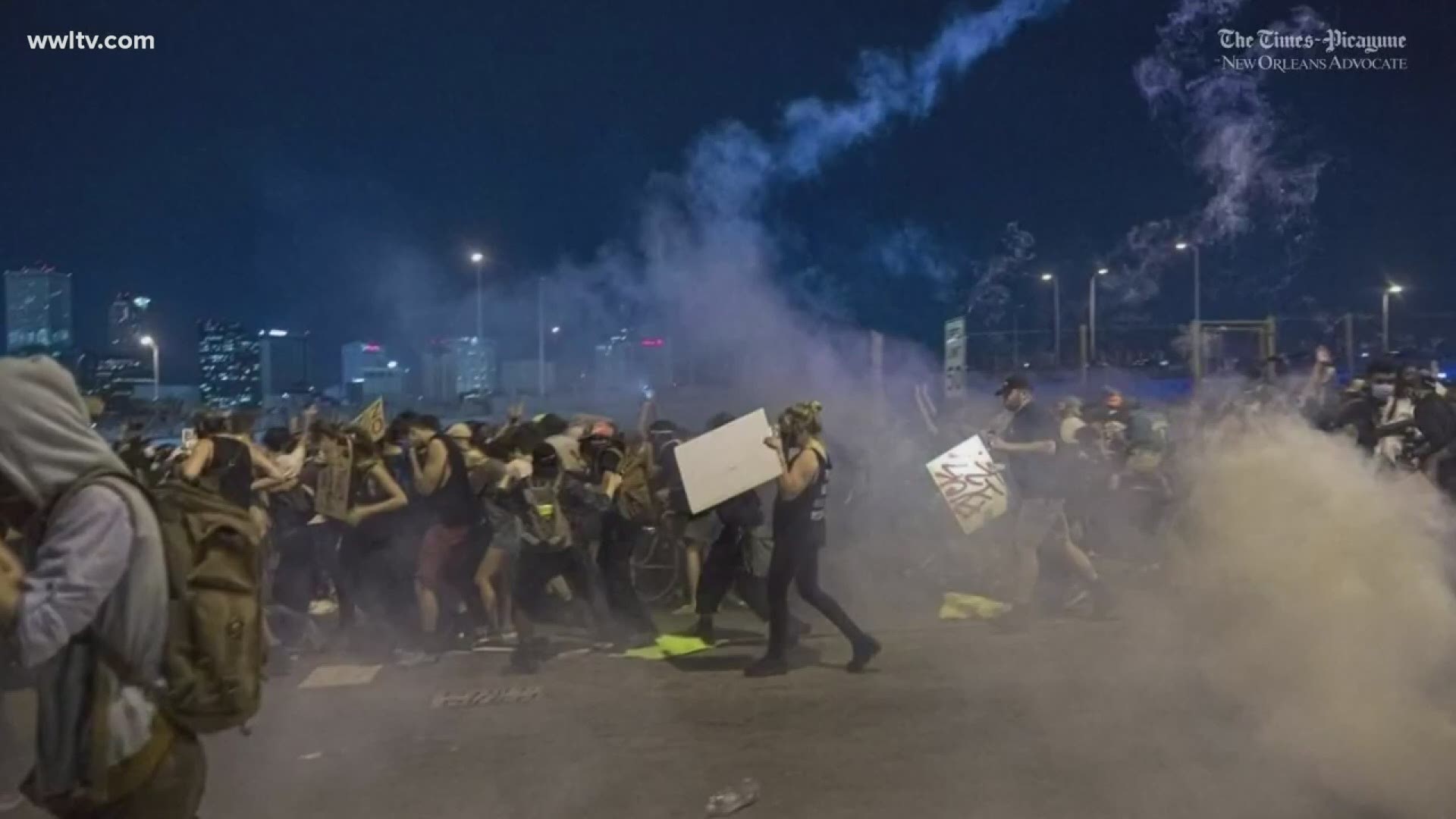NEW ORLEANS — It was a standoff that ended in a near-stampede after tear gas spread throughout the crowd atop the Crescent City Connection and rubber balls flew through the air.
Hundreds of people marched onto the bridge on June 3 to protest the killing of George Floyd by a Minneapolis police officer who kept his knee on Floyd's neck for more than eight minutes.
Now, six months after the incident on the CCC, the NOPD said officers’ actions were a mistake and that they had no policies in place to dictate how to respond to such an event or when to use force, such as tear gas or so-called “stinger rounds.”
He said work is now underway to enact new policies and give officers new training.
NOPD Superintendent Shaun Ferguson placed blame on the situation that night on a small group of people he said wanted to start trouble with police.
On Monday, he said his officers had to do something to respond.
“Were our officers wrong? I think they had to make a decision given the circumstances and the position they were placed in at that time,” he said.
Ferguson said supervisors made those decisions without any policies to guide them.
“Our department did not have a policy in place to guide a response to protests, which resulted in department failures on the bridge that night,” he said.
He said a new policy will dictate what can be used and when.
“It calls for open and clear communication and ensures specialized weapons, such as tear gas, will only be used as a last resort when life is in danger,” Ferguson said.
He said some officers in each of the city’s eight police districts are now trained in how to respond to events such as protests.
Ferguson and the NOPD initially denied using anything other than teargas on the crowd.
The chief a few days later admitted officers did fire rubber balls into the crowd. That came only after videos began to circulate on social media, showing that happen.
Ferguson said at the time communication issues within the department were to blame.
Sade Dumas, executive director of the Orleans Parish Prison Reform Coalition, said Monday’s press conference left her “with more questions now than I had before.” Dumas said she has one key question given what happened that night on the bridge.“I … just wonder how was it possible for this force to have these less-lethal weapons, which could still be fatal and not have a policy around it.”
Susan Hutson, the city’s Independent Police Monitor, said the department admitting it didn't have those types of policies in place is a starting point to fixing a problem.
“Police departments kind of double down,” she said. “Instead, the NOPD said, 'Yeah, mea culpa. Here's what was wrong. Here's what we're doing.’”
Ferguson said there were "a lot" of officers under investigation after the incident on the bridge. Since there were no policies in place, there were no violations and no disciplinary actions.

